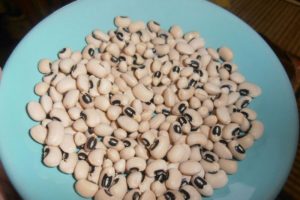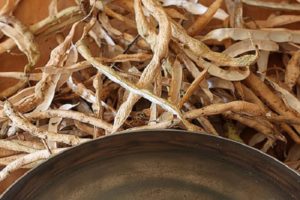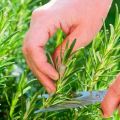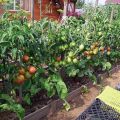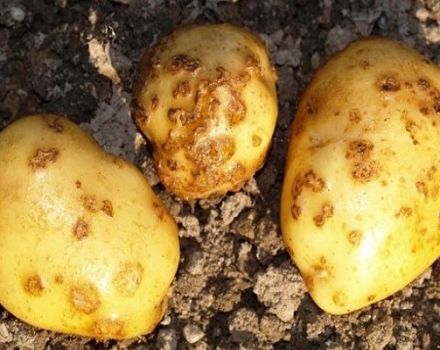How to grow and care for asparagus outdoors at home
Vegetable culture is considered exotic in Russia today. Many housewives grow it in flower beds, not knowing about the valuable and useful substances of the culture that is loved by supporters of healthy nutrition. When asked how asparagus grows, one can answer: the plant prefers sunny, calm areas. Feels good under fruit trees, as it reaches technical maturity before foliage appears. Asparagus is grown by seeds and vegetatively. Collecting shoots begins with the third season.
Content
- 1 When to plant asparagus
- 2 Propagation by cuttings
- 3 How to plant asparagus
- 4 Where to plant asparagus
- 5 How to grow asparagus from seeds
- 6 Growing asparagus seedlings
- 7 How asparagus grows from rhizomes
- 8 Preparing the soil for transplanting seedlings
- 9 Seedling care
- 10 Diseases and pests of asparagus
- 11 Harvesting asparagus
When to plant asparagus
Experienced gardeners carry out podzimnyu planting of asparagus bushes in a previously prepared place. The garden bed is dug up and fertilized with a mixture of superphosphate, potassium sulfate and ammonium sulfate. In the spring, they prefer to plant pre-soaked seeds with the use of growth stimulants. This process takes place in early April, and seedlings appear in two months. The seedlings are moved to a permanent place of growth in the second half of June.
Propagation by cuttings
For this type of reproduction, cuttings from last year's shoots are cut and placed in wet sand. It is advisable to equip the landings with a cap made from a plastic bottle.
Before rooting, the cuttings should be ventilated and sprayed, and after one or two months, transplanted in separate containers.
Reproduction of asparagus is possible by dividing the bush. In this case, all delenki must be with shoots.
How to plant asparagus
Asparagus is planted in open ground in early June under the protection of fences or walls of buildings. The culture does not tolerate soils with a high groundwater table, but it gives crops in one place without replanting up to a quarter of a century. Therefore, the place should be chosen permanent. The ideal option is fertile sandy loam soil, which is prepared in advance. In autumn, weeds are removed from the ridges, compost, potassium sulfate and superphosphate are added and dug up. After the snow melts, the site should be passed with a harrow and fertilized with wood ash and ammonium nitrate.
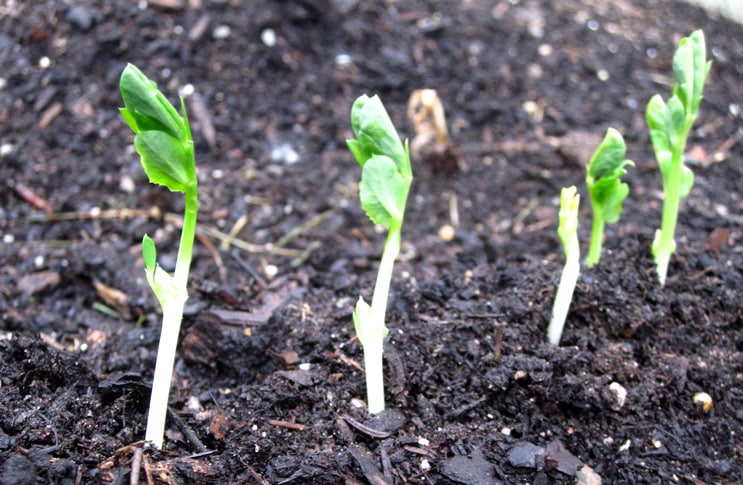
When planting asparagus seedlings in open ground, prepare pits 30 x 40 cm 30 cm deep, with an interval of one meter. The holes are covered with loose earth and the plant is planted, shortening the roots to 3 cm. The soil is compacted, watered and mulched.
Where to plant asparagus
Since the crop grows in one place for up to 25 years, the highest yields are achieved in the first years, then they stabilize and go down after 10 years.They pick up a well-lit corner in the garden where cereals and potatoes grew before.
Medicinal herbs and spices can be grown nearby.
If the seedlings are placed near the fence, they are protected from the negative effects of weeds from the street by digging in sheets of tin or slate.
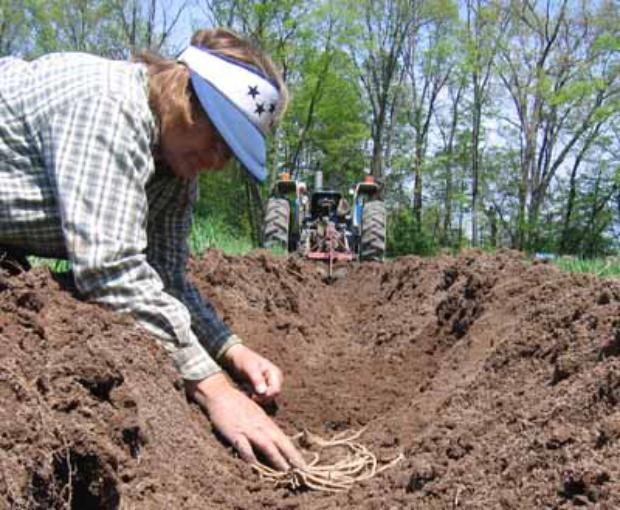
The soil in the garden should be loose in order to provide free air access to the roots. Heavy, clayey soils are rectified by the introduction of coarse sand. It is enough to plant five or six asparagus bushes in the country to provide the whole family with the product. In the case of a close occurrence of groundwater, they equip a high ridge. The acidity of the soil is reduced with bone or dolomite meal, lime.
How to grow asparagus from seeds
Cultivation of crops in the open field occurs in several ways. Sowing with seeds is a long process due to slow germination, therefore, preference is given to planting seedlings on a bed. To do this, the seeds are soaked in warm water for 3-4 days, changing the water to fresh water twice a day. The swollen seeds are wrapped in a damp cloth until the sprouts hatch. Then, containers are prepared with a soil mixture of two parts of sand and one part of peat, garden soil and rotted manure.
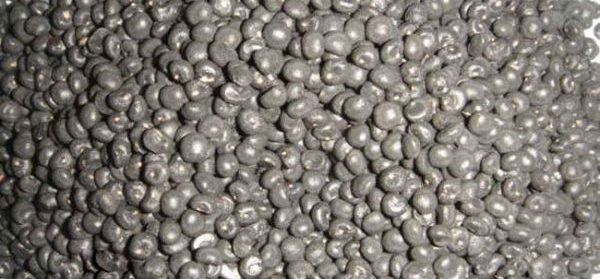
Sowing is carried out in grooves to a depth of 2 mm, the seeds are laid out at a distance of 5 cm from each other. The container is installed in a well-lit place with an ambient temperature of +25 degrees. With daily watering, seedlings appear after a week. Features of sprout care - peat powder. Two-week-old seedlings are fed with a complex mineral fertilizer of moderate concentration.
Germinating seeds in the sand
The seeds are planted in a plastic container fitted with a lid in early spring. The container is filled with river sand 5 mm and slightly moistened. Seeds are laid out on the surface at intervals of one millimeter and slightly buried with a spoon. If the container is without a lid, it is placed in a polyethylene bag and left at freezing temperatures.
The location of the crops does not matter, since they do not need lighting.
Dried sand must be moistened. After a week sprouts germinate, then you should open the container and put it on the windowsill.
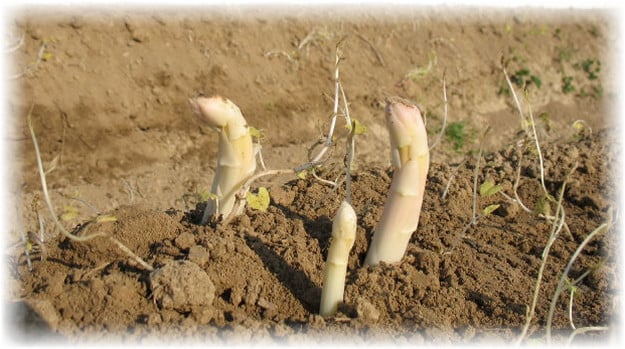
Picking
Asparagus seedlings are dived when they get cramped. When transplanting, it is necessary to provide each plant with a growing area of 5 x 5 cm. You can buy ready-made soil or mix peat and garden soil in equal proportions. Seedlings are planted with a lump of soil and deepened a little. Seedlings tend to stretch and bend to the ground, this is a temporary phenomenon.
Growing asparagus seedlings
At the end of May, the seedlings begin to harden, exposing them to the open air, first for one hour, gradually increasing to 12 hours. In early June, the asparagus will be ready for planting in beds 30-40 cm high and one meter wide. A distance of 60 cm is left between the rows, separating the seedlings from each other by 40 cm.

When cultivating asparagus, you need to take into account the ability of some varieties to withstand short-term severe frosts in adulthood, over four years. Young plants are harmed by a temperature of -25 degrees.
How asparagus grows from rhizomes
Root propagation is the fastest, most effective and popular. Disembarkation takes place before winter or spring. Rhizomes are bought or used growing on the site. Having dug out of the ground, divide them into parts and soak them for half an hour in warm water.
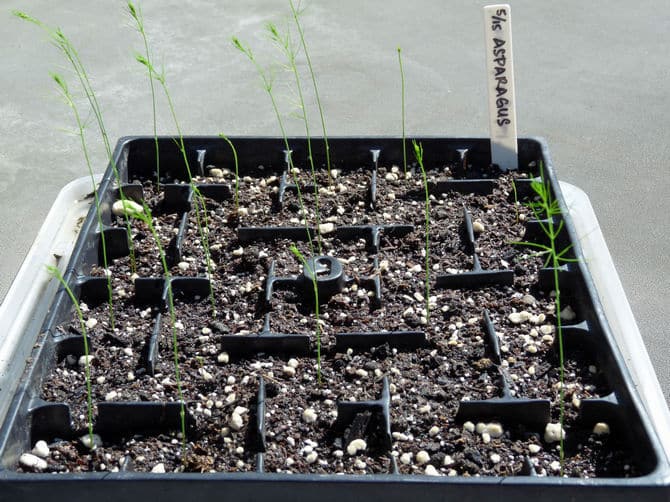
A half-meter distance is maintained between the rows. A nutritious substrate is poured in the center of the hole, into which the roots are placed at intervals of 30 cm. The plantings are covered with earth, watered and mulched with sawdust, tree bark or dry foliage.
Preparing the soil for transplanting seedlings
In the case of the seedling growing method, autumn preparation of the site is necessary.The need for soil fertilization is the introduction of manure and fertilizing with potassium and phosphorus content. Acidic soils are deoxidized with chalk or with the help of liming, after which the ridges are dug up.
Seedling care
Abundant hydration is necessary for asparagus immediately after planting. Then the plants need to be watered from time to time, weeds must be removed.
To stimulate growth, the shoots must be fed with a slurry solution prepared from one part of the manure and six parts of water.
Three weeks later, bird droppings are introduced, diluted with water in a tenfold volume. Top dressing with complex mineral fertilizer is carried out in the fall. For winter, the asparagus is cut to a height of 2.5 cm, spud and covered with dry leaves and humus.
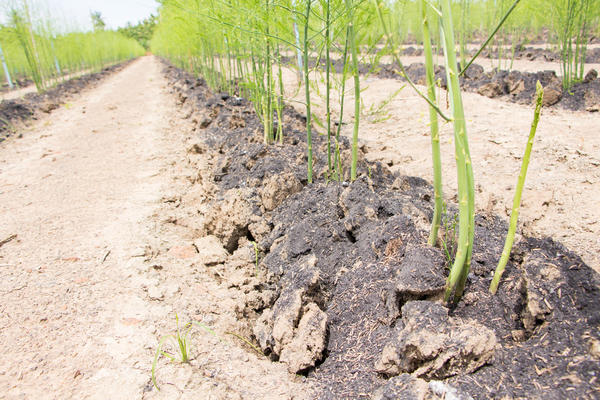
The soil around the plants needs regular loosening in order to provide the root system with oxygen. The procedure is carried out monthly, with caution, due to the superficial location of the roots.
Neighborhood with parsley, green onions, dill has a beneficial effect on the growth and development of asparagus.
Diseases and pests of asparagus
Garden plants are susceptible to:
- Fusarium, which is a type of root rot. Appears from waterlogged soil.
- Vegetable rust. A disease caused by fungi inhibits growth and destroys untreated plants.
- Rhizoctonia. A rare disease transmitted from carrots requires preventive treatment due to the proximity of this culture.
- A leaf-eating asparagus beetle.
- Asparagus fly gnawing holes in young plants. The pest insect lays the larvae, destroying the planting.
- Garden slugs that eat all parts of the asparagus, not disdaining old and coarse shoots.
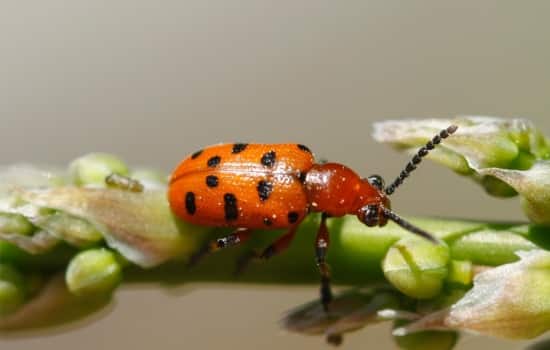
To avoid such phenomena, timely treatment with appropriate preparations is necessary. Preventive measures in the form of spraying with "Karbofos", which have low toxicity and are suitable for protecting various horticultural crops, help from pests.
Harvesting asparagus
Asparagus is suitable for use in the 3-4th year. It is supposed to cut asparagus after raising the rhizomes above the soil surface. If winter is not too frosty and spring comes early, harvesting begins in April. Twenty-centimeter shoots are cut for cutting. No more than three stems are collected from the plant. Cleaning lasts 14 days. In subsequent seasons, it is permissible to cut off 10 shoots from each plant in a month and a half.
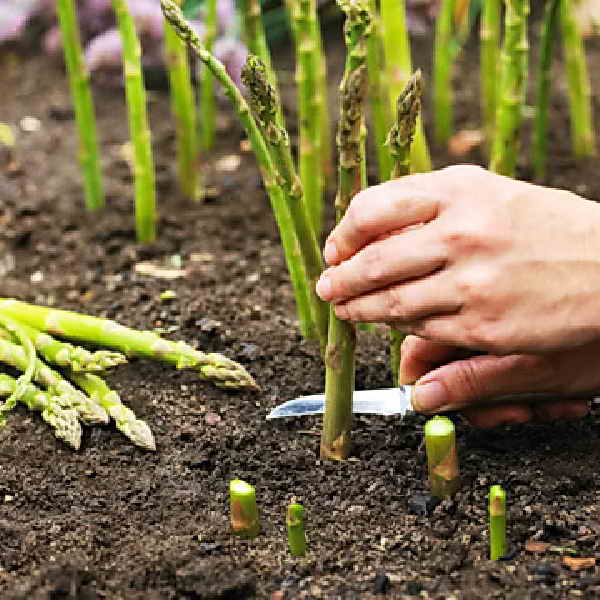
The stems are supposed to huddle, remove weeds from the site and apply mineral fertilizing. Rhizomes give out new shoots that develop and form buds before the onset of cold weather.
The cut asparagus is sorted out to remove the unusable stems and placed in a warm place. Leaves smooth, squeaky stems with a noticeable sheen. Then it is wrapped in a damp cloth and stored on the bottom shelf of the refrigerator or in another dark cool place for up to 3-4 months. Strong-smelling products give their odors to the shoots, so their proximity should be excluded. Vertical placement is recommended to avoid deformation.
Many gardeners keep the harvest in the cellar, spreading it out in wooden boxes, sprinkling layers with sand.
Asparagus intended for long-term storage are trimmed off. The products are placed in a hermetically sealed container and placed in a refrigerator with a temperature regime of 0 ... -20 degrees. Such conditions help to preserve color and nutrients. Freezing of pre-boiled asparagus is allowed.
Asparagus is popular not only as a food product, but also as a garden decoration. An ornamental plant harmoniously complements flower arrangements.
